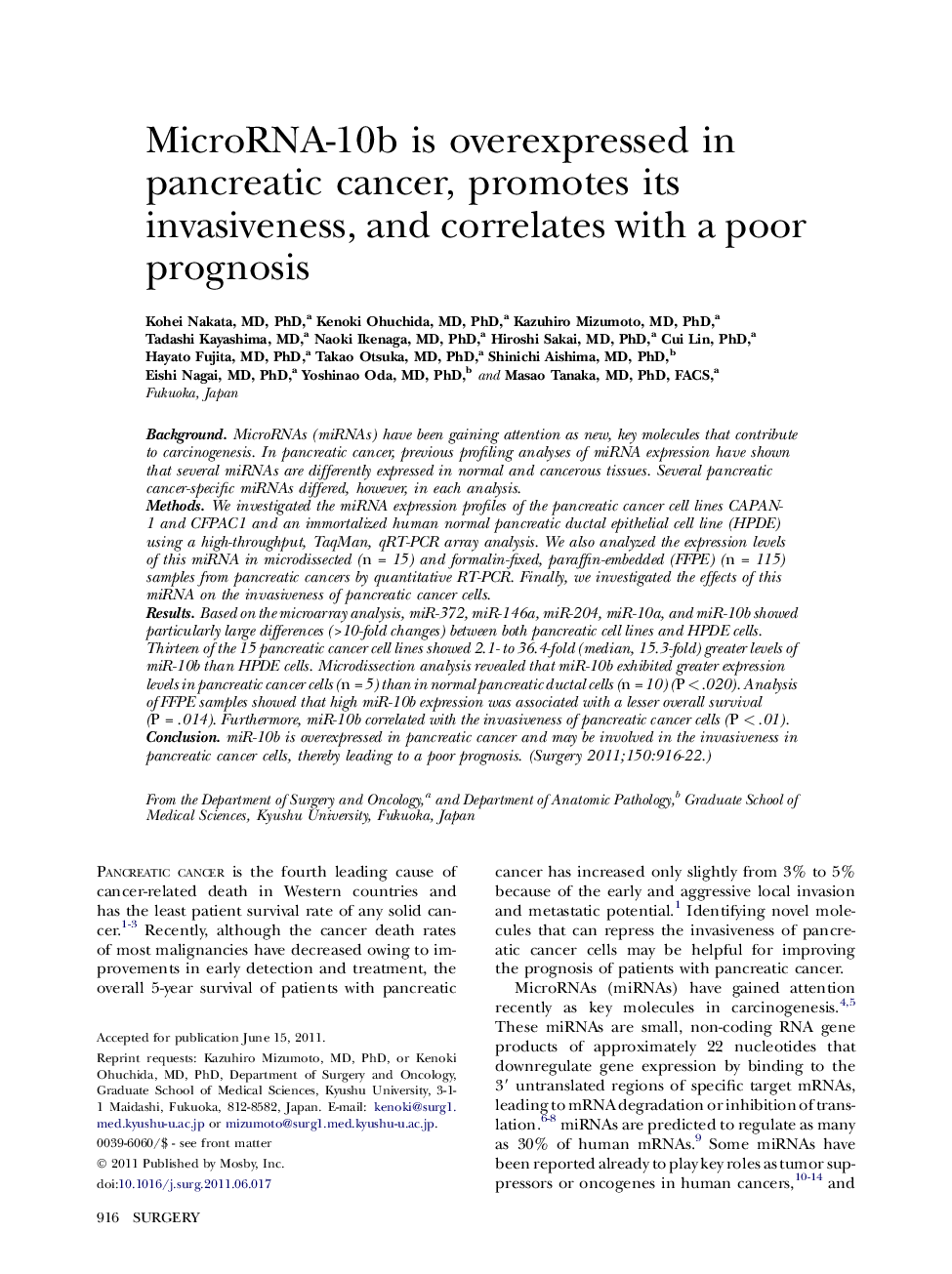| Article ID | Journal | Published Year | Pages | File Type |
|---|---|---|---|---|
| 4307890 | Surgery | 2011 | 7 Pages |
BackgroundMicroRNAs (miRNAs) have been gaining attention as new, key molecules that contribute to carcinogenesis. In pancreatic cancer, previous profiling analyses of miRNA expression have shown that several miRNAs are differently expressed in normal and cancerous tissues. Several pancreatic cancer-specific miRNAs differed, however, in each analysis.MethodsWe investigated the miRNA expression profiles of the pancreatic cancer cell lines CAPAN-1 and CFPAC1 and an immortalized human normal pancreatic ductal epithelial cell line (HPDE) using a high-throughput, TaqMan, qRT-PCR array analysis. We also analyzed the expression levels of this miRNA in microdissected (n = 15) and formalin-fixed, paraffin-embedded (FFPE) (n = 115) samples from pancreatic cancers by quantitative RT-PCR. Finally, we investigated the effects of this miRNA on the invasiveness of pancreatic cancer cells.ResultsBased on the microarray analysis, miR-372, miR-146a, miR-204, miR-10a, and miR-10b showed particularly large differences (>10-fold changes) between both pancreatic cell lines and HPDE cells. Thirteen of the 15 pancreatic cancer cell lines showed 2.1- to 36.4-fold (median, 15.3-fold) greater levels of miR-10b than HPDE cells. Microdissection analysis revealed that miR-10b exhibited greater expression levels in pancreatic cancer cells (n = 5) than in normal pancreatic ductal cells (n = 10) (P < .020). Analysis of FFPE samples showed that high miR-10b expression was associated with a lesser overall survival (P = .014). Furthermore, miR-10b correlated with the invasiveness of pancreatic cancer cells (P < .01).ConclusionmiR-10b is overexpressed in pancreatic cancer and may be involved in the invasiveness in pancreatic cancer cells, thereby leading to a poor prognosis.
